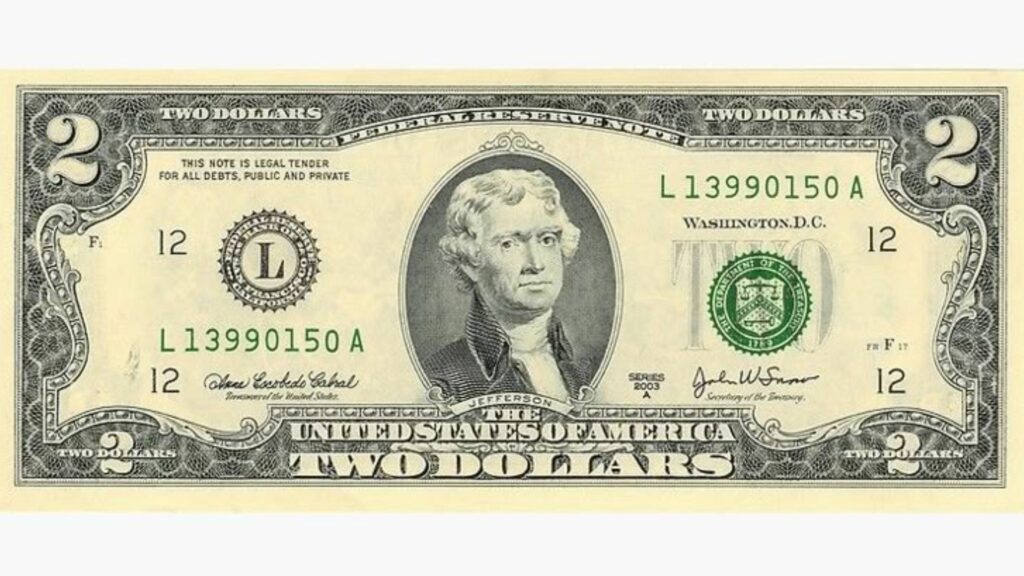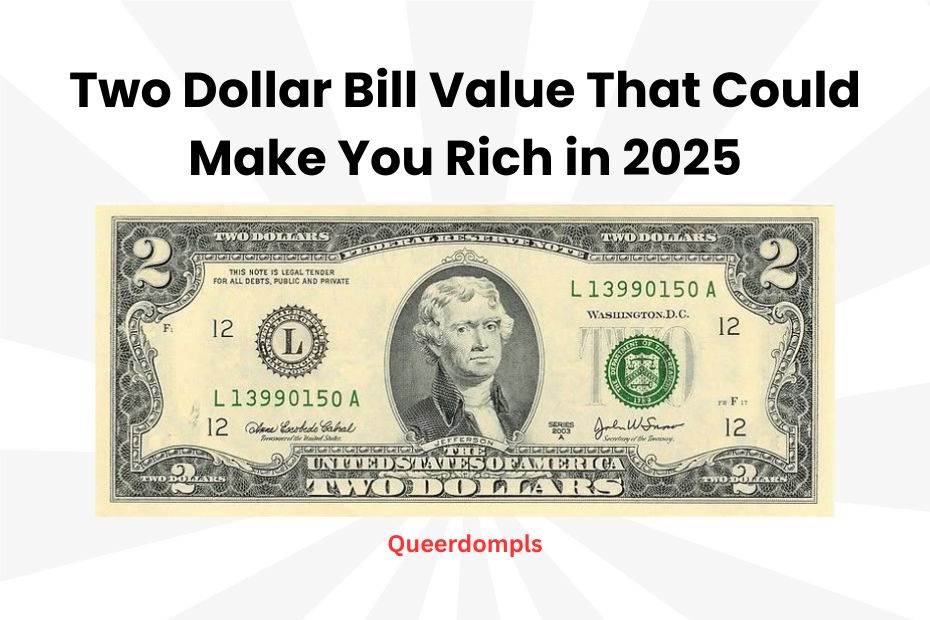Many people don’t pay much attention to the two dollar bill value. But did you know it can be worth a lot more than two dollars? Some $2 bills are rare and special. They can sell for hundreds or even thousands of dollars!
In this article, you’ll learn how to read the $2 bill value chart, what makes some bills valuable, and how to find hidden treasures in your collection.
What Is the Two Dollar Bill Value Chart?
The $2 bill value chart helps people understand how much a $2 bill is worth. It doesn’t just look at the amount printed on it. It checks things like:
- Series Year: The year the bill was printed.
- Condition: Whether the bill is new or old-looking.
- Special Features: Serial numbers, printing mistakes, or unique designs.
- Rarity: How hard it is to find that kind of bill.
If your bill ticks some of these boxes, it could be a hidden gem.
Examples of Rare $2 Bills and Their Value

Here are a few rare $2 bills and how much they could be worth:
| Bill Description | Possible Value |
|---|---|
| 1928 Series, Mint Condition | Up to $4,500 |
| 1953 Star Note | Up to $1,200 |
| 1976 First Day Issue with Postmark | Up to $50 |
| 1963 Radar Serial Number | Up to $600 |
| 1890 Misprint Error | Up to $3,000 |
Note: Values can change depending on condition and demand.
1. Series Year Matters
The year on your bill is very important. Older bills are usually more valuable.
- 1928 Series: First small-size $2 bill with Jefferson’s face.
- 1953 Series: First redesign of the $2 bill.
- 1963 Series: Added “In God We Trust” on the back.
- 1976 Series: Bicentennial edition with a unique back design.
Older and unique series are often worth more.
2. Check the Condition
The better your bill looks, the more it may be worth. Here’s how they are ranked:
- Uncirculated (CU): Perfect, no folds or damage.
- Extremely Fine (EF): Slightly used, very minor folds.
- Fine (F): Used often, some creases.
- Good (G): Very worn out, might have tears or stains.
Try to keep your bills in great condition for better value.
3. Rare Serial Numbers
Some serial numbers make a $2 bill very special:
- Low Numbers: Like 00000001.
- Repeater Numbers: Like 121212 or 777777.
- Radar Numbers: Same forward and backward (e.g., 1234321).
- Star Notes: These have a star symbol and are very rare.
Collectors love these and often pay more for them.
4. Look for Errors
Mistakes during printing make a bill very rare. Some examples include:
- Misaligned Printing: Picture or words are not straight.
- Foldovers: Paper folded during printing.
- Double Prints: Design is printed twice.
- Inverted Back: Back is upside down.
If your $2 bill has a mistake, don’t throw it away! It could be worth a lot.
5. Steps to Find a Hidden Gem
Want to see if your $2 bill is valuable? Follow these steps:
- Check the Year: Older bills are more valuable.
- Look at the Condition: Clean, crisp bills are best.
- Find the Serial Number: Watch for special patterns.
- Search for Errors: Any printing problem can add value.
If you find any of these things, your $2 bill could be a treasure!
Conclusion
The $2 bill may seem small, but it can hold great value if it’s rare, clean, or has cool features. Learning to read the $2 bill value chart can help you find these special notes in your wallet or at home.
Always check the year, condition, serial number, and printing details. You never know—you could be holding onto a piece of money that’s worth hundreds or even thousands of dollars!
FAQ’S
Are $2 bills still used today?
Yes, they are still legal and can be found at banks, but they are not used often.
How do I know if my $2 bill is special?
Look at the year, condition, serial number, and printing quality
Why are star notes important?
They are rare replacement bills made in small numbers.
